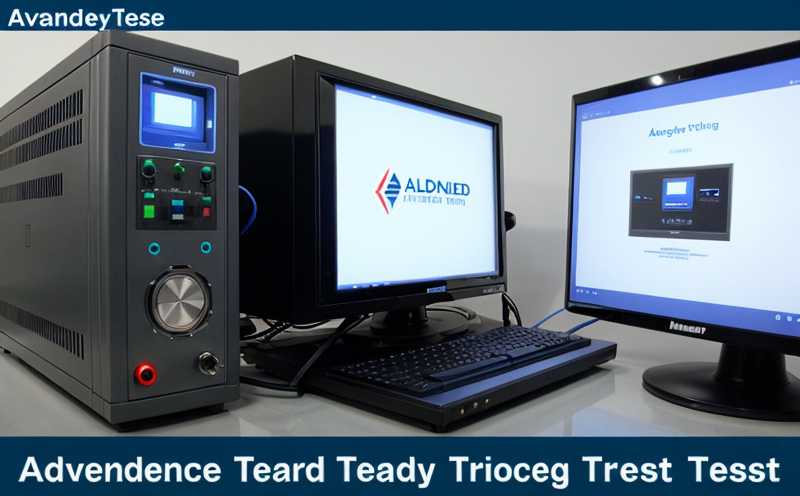ASTM E407 Metallographic Etching in Advanced Semiconductor Process Testing
The ASTM E407 standard is a cornerstone of metallographic etching techniques, widely used for the examination and analysis of microstructural features within semiconductor materials and components. This service provides detailed insights into the application of ASTM E407 metallographic etching in advanced semiconductor process testing.
Metallography involves the microscopic study of the internal structure of metals and alloys, revealing information about their composition, grain size, texture, and defect distribution. In the context of semiconductors, this technique is vital for quality assurance during manufacturing processes. ASTM E407 specifies a detailed etching process that enhances visibility by selectively dissolving certain phases or regions in the sample to highlight others.
The process begins with careful preparation of the specimen, which may include polishing and grinding to achieve a mirror-like finish on the surface. The choice of etchant is critical; it must be selected based on the specific material being analyzed. For instance, nitric acid-hydrofluoric acid (HNO3-HF) solutions are commonly used for copper-based materials.
Once prepared, the specimen undergoes a controlled etching process under precisely defined conditions of temperature and time to ensure uniformity across all samples. The resulting microstructure can then be observed using optical or electron microscopy, providing detailed insights into crystallographic orientations, grain boundaries, precipitates, and other features that are crucial for understanding the behavior of materials during semiconductor fabrication.
ASTM E407 metallographic etching plays a pivotal role in identifying defects such as voids, cracks, and inclusions which can significantly impact device performance. By detecting these flaws early in the production cycle, manufacturers can implement corrective measures to improve product quality and reliability. This service ensures that all testing adheres strictly to ASTM E407 standards, delivering accurate and reproducible results.
Quality control engineers benefit greatly from this service as it helps them maintain high standards throughout the manufacturing process. Compliance officers also find value in ensuring adherence to industry best practices while meeting regulatory requirements. For R&D teams, it offers valuable data points for optimizing material selection and processing techniques.
Applied Standards
The ASTM E407 standard is specifically designed for the etching of metals to reveal their microstructure. This method provides a means of examining the internal structure of materials in a way that can help identify defects, grain boundaries, and other features relevant to semiconductor manufacturing.
When applied to semiconductors, ASTM E407 allows technicians to observe the precise alignment and distribution of dopants within the material. This is essential for ensuring optimal performance characteristics such as conductivity and thermal stability. The standard specifies a range of etchants suitable for various materials, including copper, aluminum, gold, and silver.
The process involves carefully preparing the specimen by polishing it down to a fine finish before immersing it in an appropriate solution at room temperature or slightly elevated temperatures depending on the material type. The duration of the etching step is critical; too long can lead to overetching which may remove important details, whereas insufficient time results in poor contrast and difficult interpretations.
To ensure consistent results across different labs and facilities, ASTM E407 includes detailed guidelines for sample preparation, etchant selection, temperature control, and observation methods. These recommendations are crucial for maintaining accuracy and repeatability in metallographic analysis.
Quality and Reliability Assurance
The application of ASTM E407 metallographic etching is integral to the quality assurance process within semiconductor manufacturing. By providing a detailed view of the microstructure, this technique helps identify potential issues early in the production cycle that could otherwise lead to costly failures later on.
One key aspect of quality control using ASTM E407 involves monitoring grain size and texture, both of which are influenced by temperature during crystallization. Ensuring proper grain growth is crucial for achieving desired electrical properties like resistivity. Any deviations from expected values could indicate problems in the growth process or post-processing steps.
Another critical element tested through ASTM E407 etching is the distribution and orientation of dopants, particularly boron (B) atoms in silicon wafers used for making integrated circuits. Properly distributed dopants are essential for creating p-n junctions necessary for transistor operation. Inadequate doping can result in suboptimal device performance.
By adhering strictly to ASTM E407 procedures, laboratories ensure that their findings are reliable and comparable among different facilities. This enhances confidence in the overall quality of semiconductor products produced across various geographical locations.
Use Cases and Application Examples
| Application Case | Description |
|---|---|
| Detection of Defects | Identifying voids, cracks, and inclusions that could compromise the integrity of semiconductor devices. |
| Grain Size Measurement | Evaluating grain size distribution to assess how well materials have crystallized during processing. |
| Dopant Distribution Analysis | Examining the placement and concentration of dopants within silicon wafers for optimal transistor behavior. |
- Grain Boundary Detection: Examining grain boundaries to ensure proper alignment which is critical for maintaining uniform electrical properties throughout the material.
- Inclusion Evaluation: Identifying inclusions that could affect mechanical strength and thermal conductivity of the final product.





